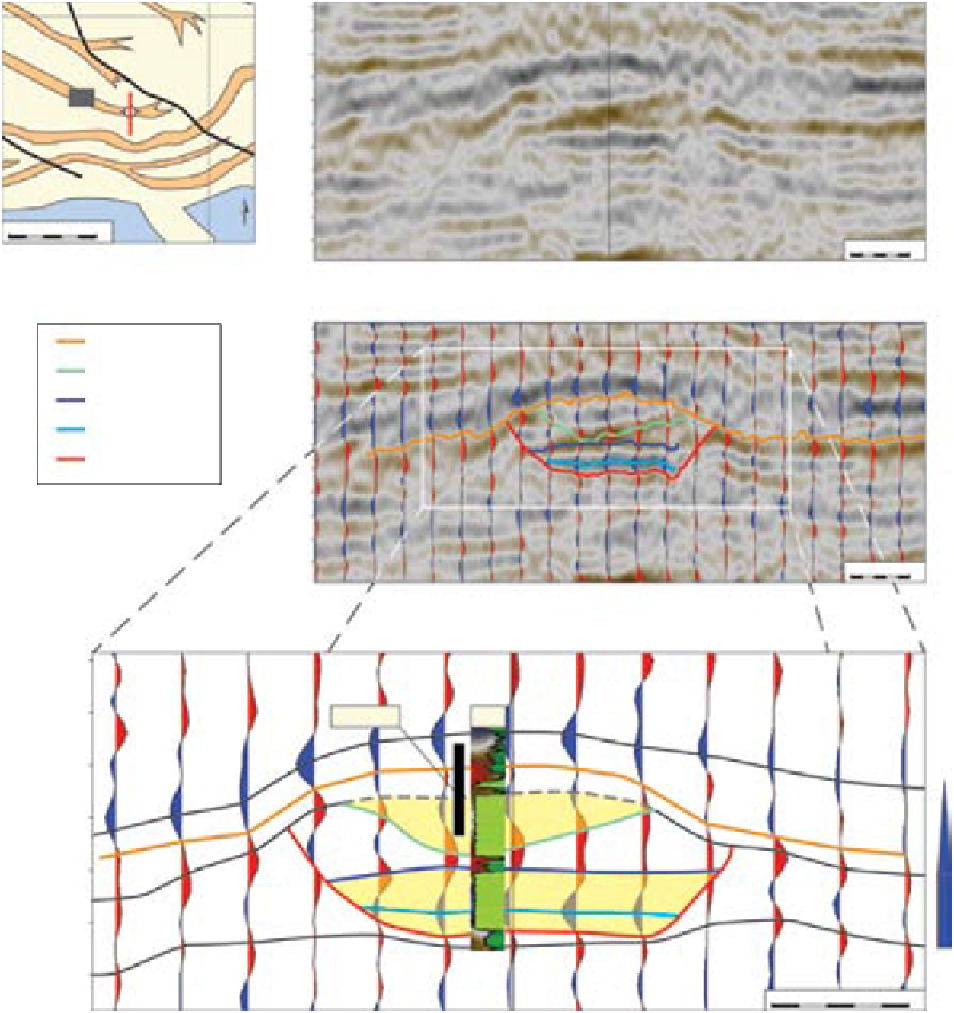Geoscience Reference
In-Depth Information
25/6
-
3
N
S
1940
1960
1980
2000
2020
2040
C3
25/6
-
3
2060
2080
2100
2120
2140
0
5 km
N
0
250 m
UHN98 R00 Inline 4649
N
25/6
-
3
S
1940
Sele Fm
1960
1980
2000
2020
2040
2060
2080
2100
2120
2140
Base upper sst.
Top lower sst.
'Channel reflector'
Base lower sst.
0
250m
25/6
-
3
1960
1980
GR
46m core
2000
2020
2040
2060
2080
0
250m
Fig. 10.
above: Interpreted and un-interpreted seismic section through well 25/6-3. The interpretations are based on the
well tie shown in Fig. 9. The reflector labelled 'channel reflector' corresponds to a sinuous channel shape in the RGB blend
(see Fig. 9C). Note that the seismic reflectors interpreted in cross-section form an 'eye shape' across the Hermod Member
in well 25/6-3. The interpreted difference in thickness between this 'eye' and the surrounding area is 30 ms to 40 ms two
way time (twt). Each of the two 30 m thick sandstones encountered by the well represents < 25 ms twt, suggesting that the
'eye shape' is set up by the combined effect of both sandstones. Below: Seismic wiggle display focused on the Hermod
Member. The gamma ray log (GR) and the cored interval in well 25/6-3 are indicated. The 'eye shape' is interpreted as a
channel complex with two 30 m thick sandstones. The base of the youngest 30 m thick sandstone ties (Fig. 9B) to a concave
upward reflector. The channel complex is interpreted to have formed in the fan growth phase and the overlying more tabu-
lar unit is interpreted as deposits related to the fan retreat phase.

Search WWH ::

Custom Search